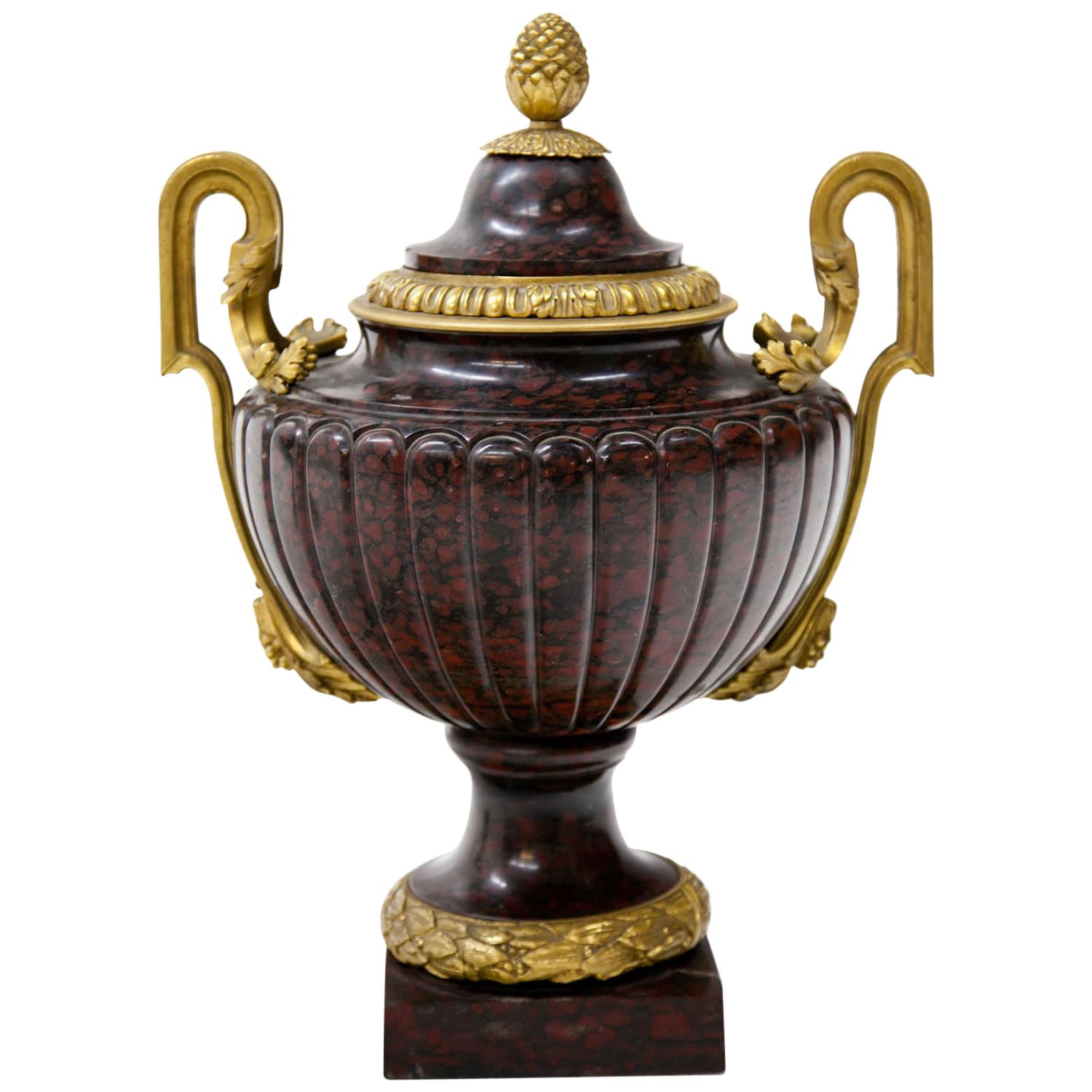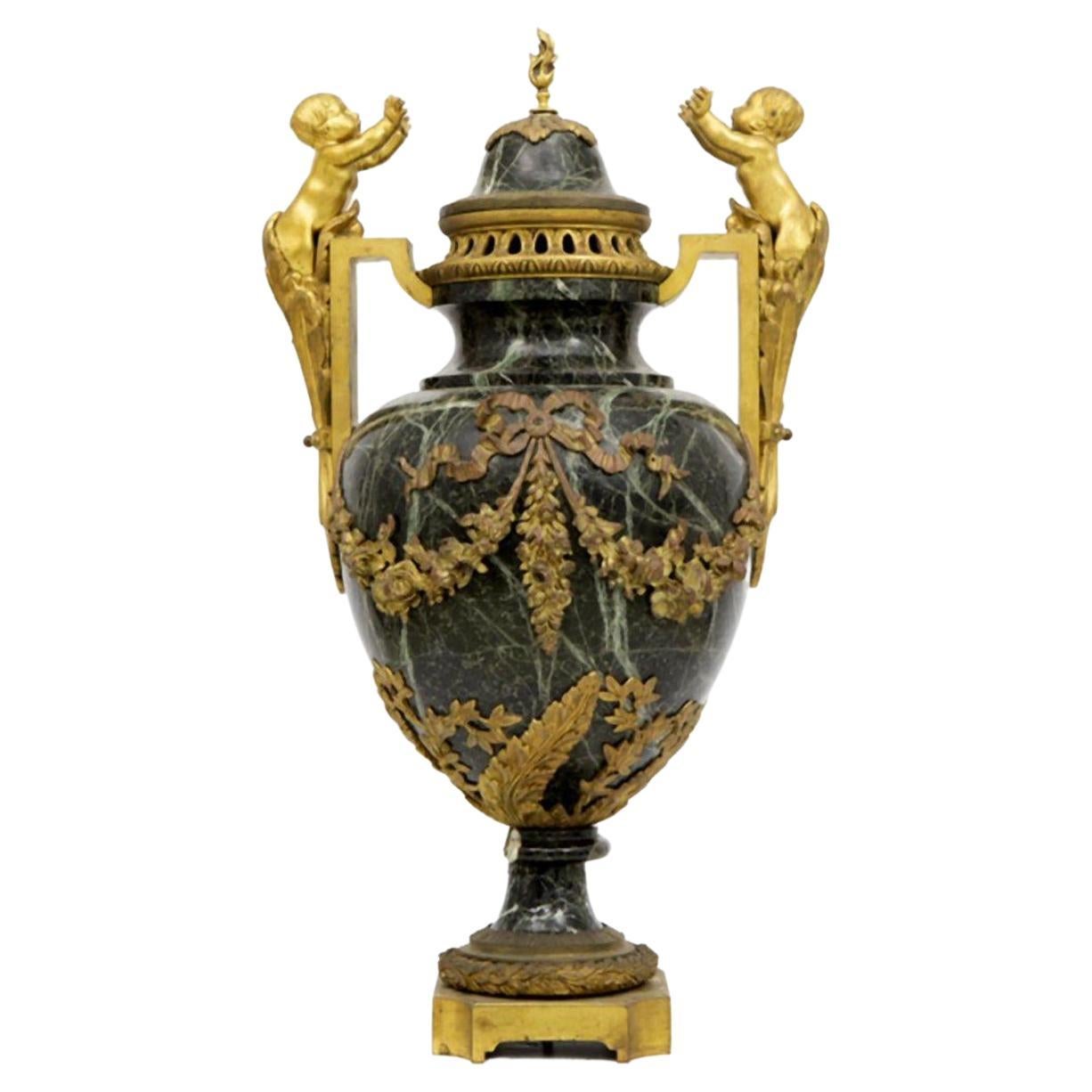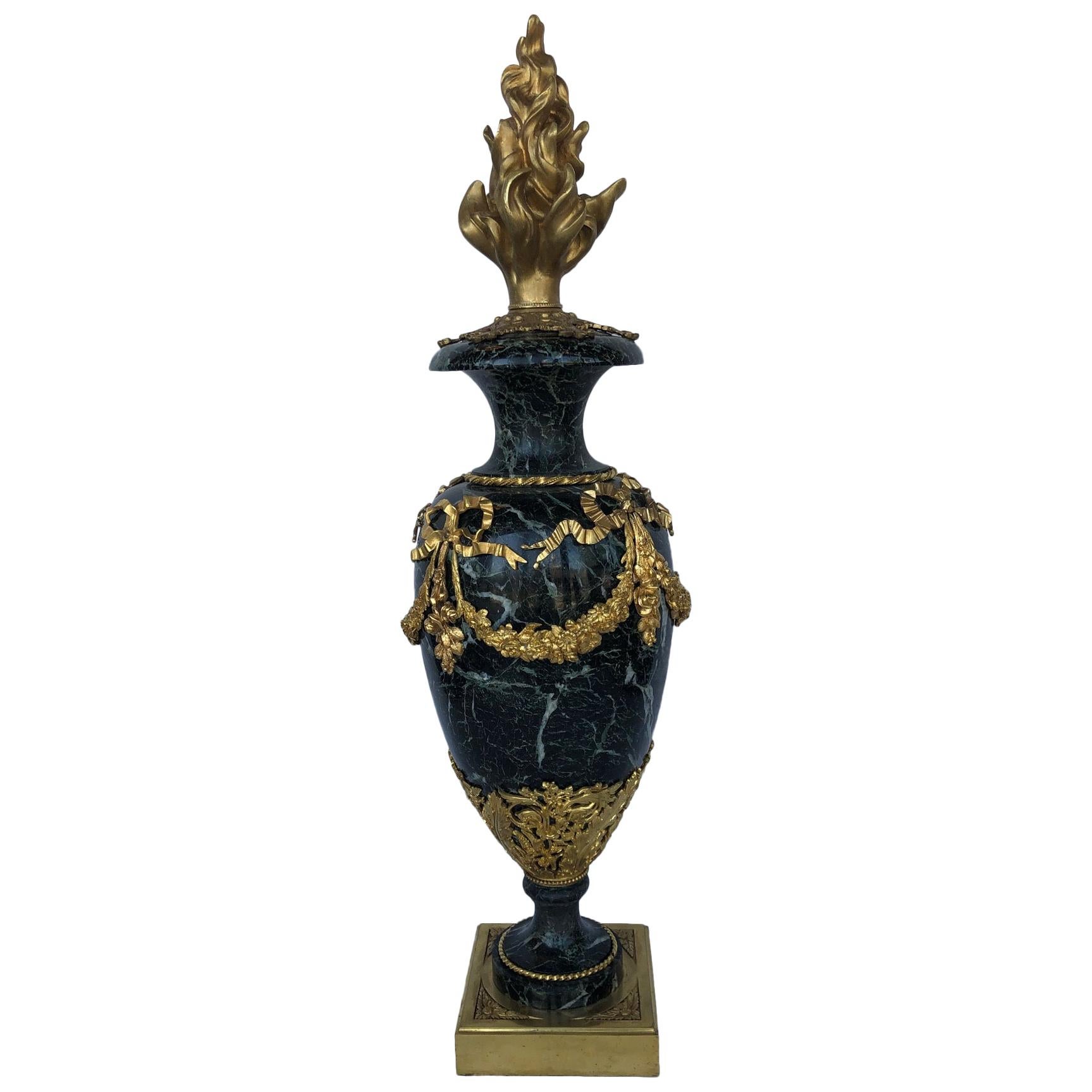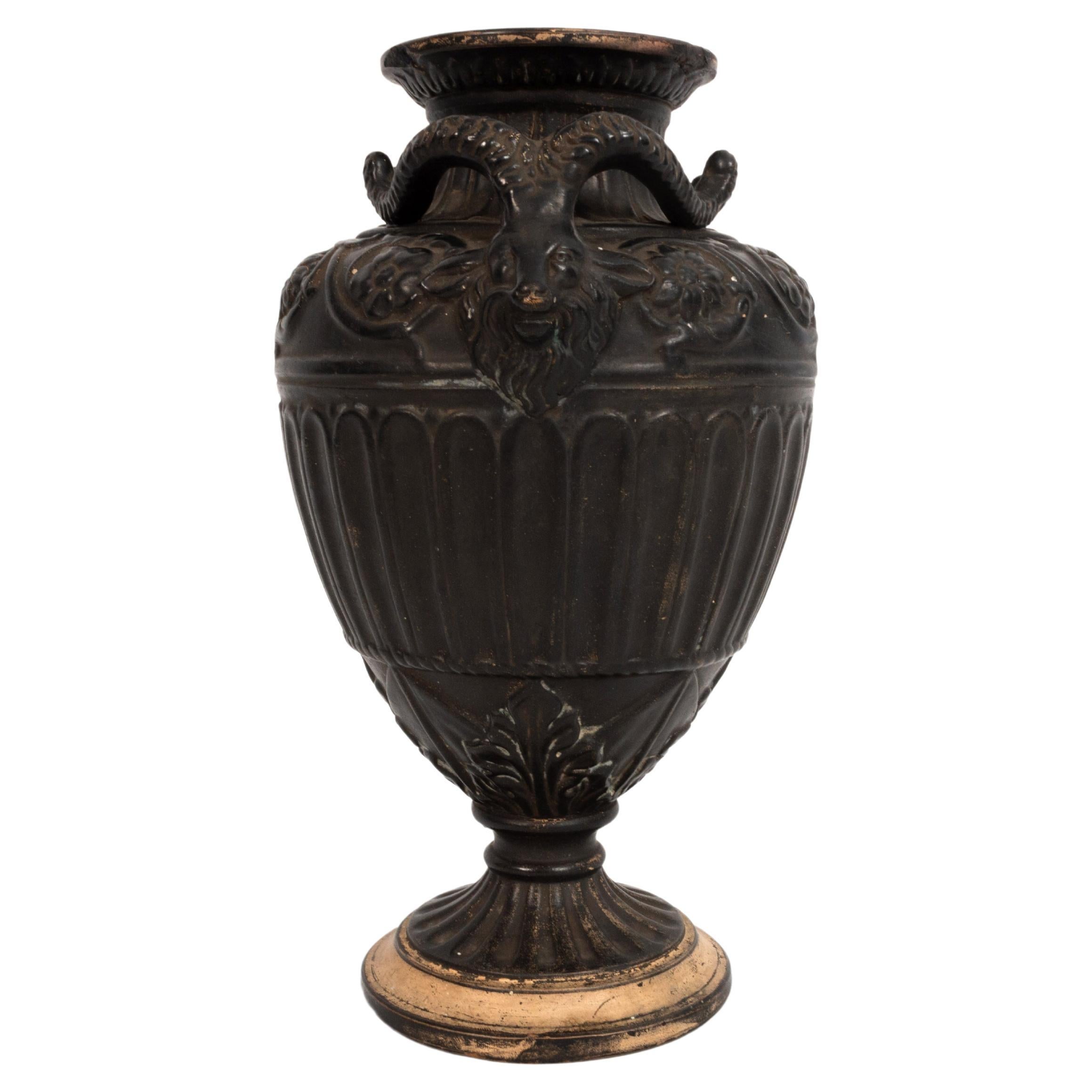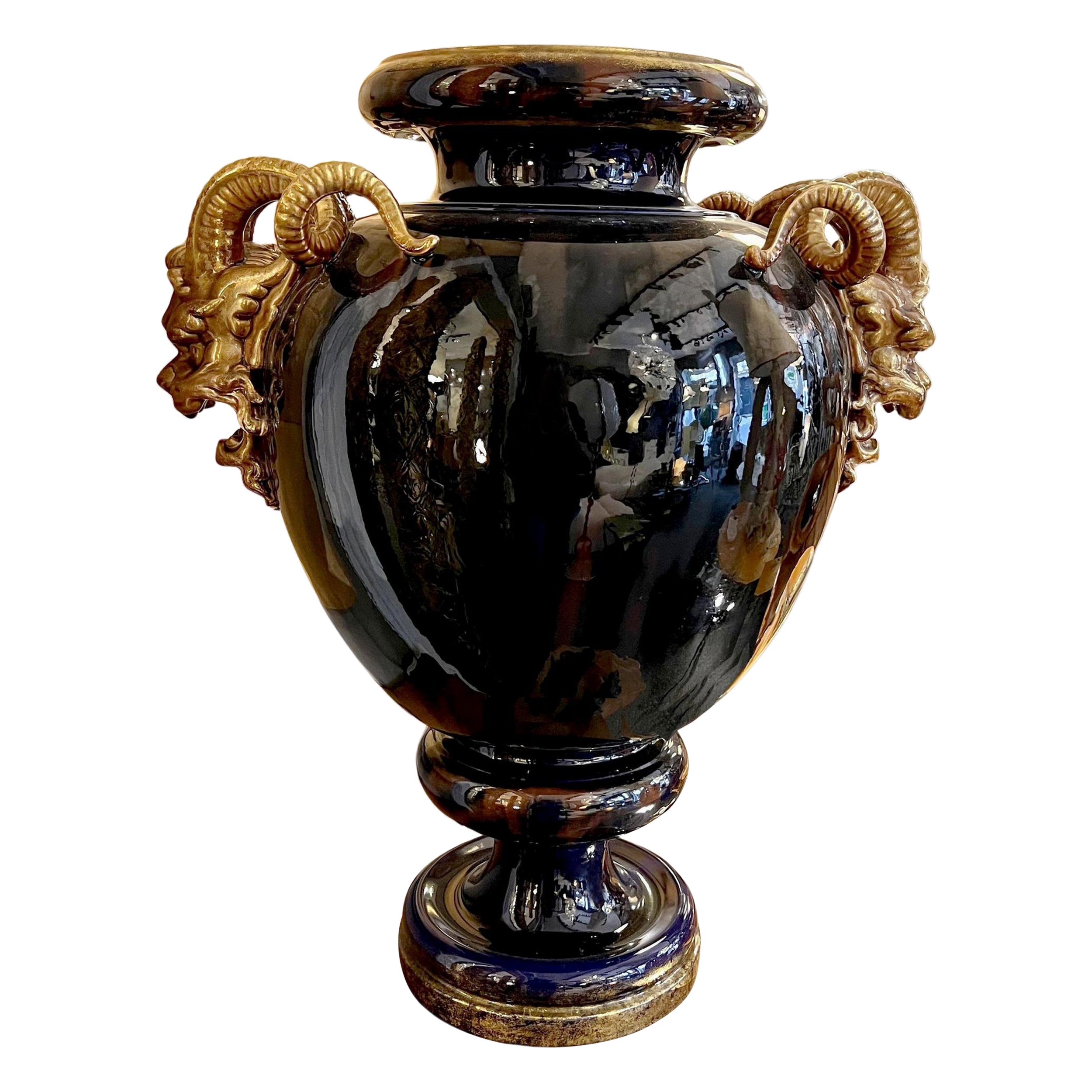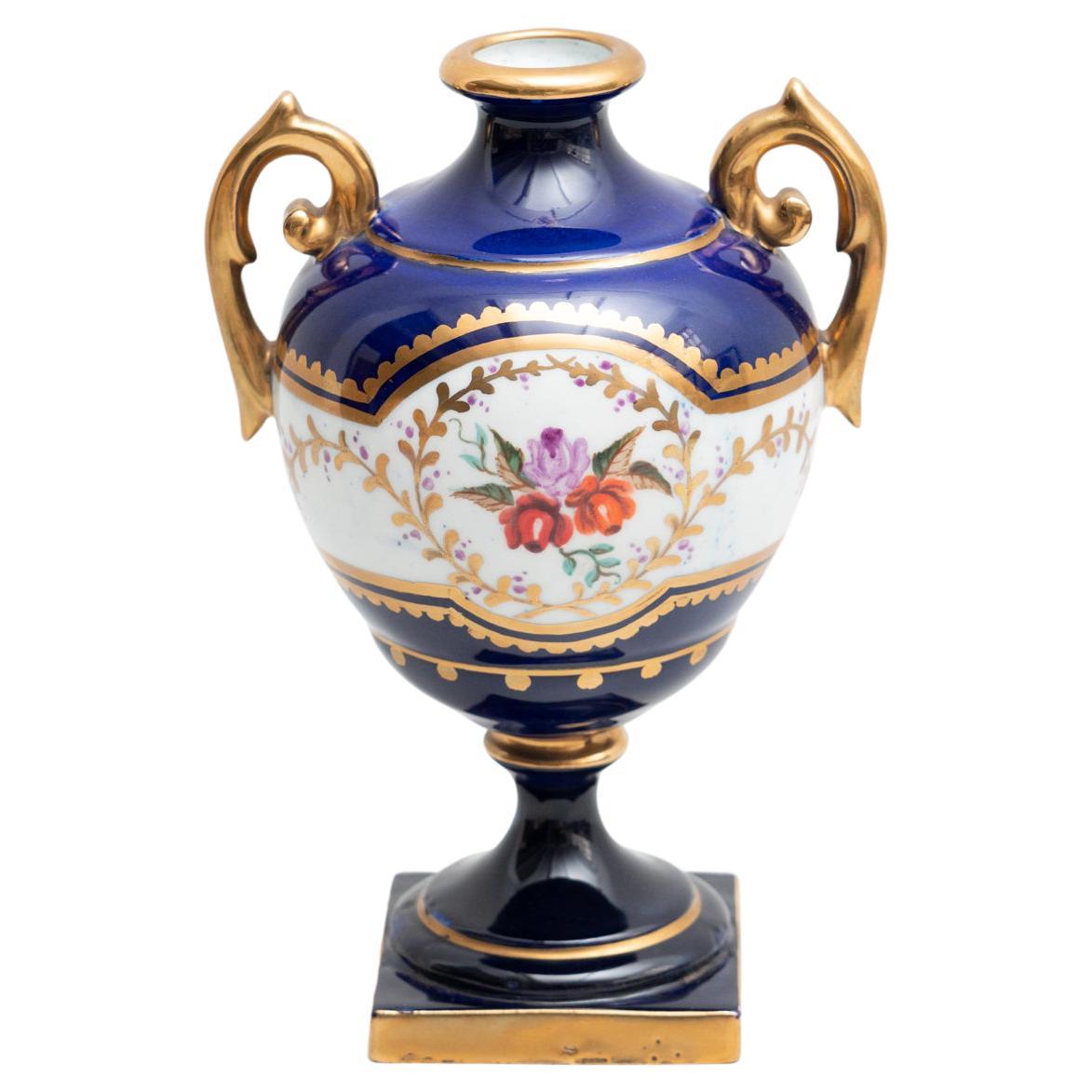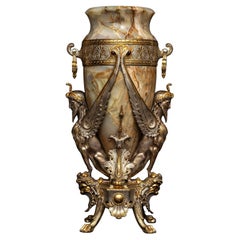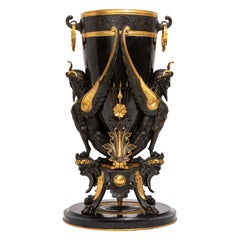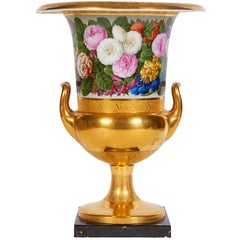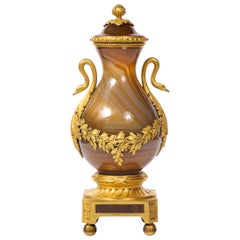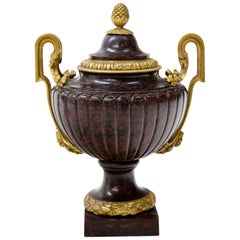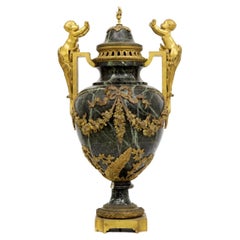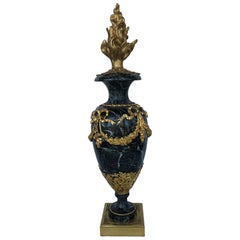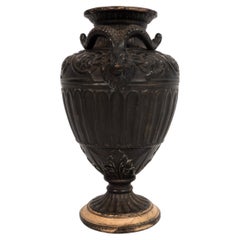Items Similar to Russian Imperial Lapidary Kalkan Jasper Covered Vase Ekaterinburg Workshops 1887
Want more images or videos?
Request additional images or videos from the seller
1 of 21
Russian Imperial Lapidary Kalkan Jasper Covered Vase Ekaterinburg Workshops 1887
$265,000
£199,387.88
€230,356.15
CA$374,514.17
A$406,649.59
CHF 215,350.71
MX$4,984,359.03
NOK 2,665,049.88
SEK 2,518,331.04
DKK 1,719,283.70
About the Item
A Highly Important and Very Rare Museum Worthy Russian Imperial Lapidary Kalkan Jasper Covered Vase, by the Imperial Russian Lapidary Ekaterinburg Workshops, Inscribed 1887. This monumental vase is carved entirely from Kalkan jasper and was produced at the Imperial Lapidary Workshops in Ekaterinburg in 1887. The vase belongs to a known group of four monumental hardstone vases manufactured between 1885 and 1887, each recorded at the time with a cost of 3,435 rubles. Of the four, one was exhibited at the 1896 All-Russia Industrial and Art Exhibition in Nizhny Novgorod. Another was recorded as a diplomatic gift from Tsar Nicholas II, while the fourth remains untraced. The present example is carved in the same model and material, consistent in form and scale with the others from this rare commission. This particular vase was most probably directly ordered by the Russian Tsar.
The vase is of baluster form, tapering to a circular footed base with a fluted neck, a gadrooned lower section, and a detachable domed lid. The upper body is decorated with a deeply carved relief garland composed of flowers, grape clusters, leaves, and fruit, applied symmetrically around the midsection. A continuous band of interlaced laurel carving encircles the lower shoulder. Rising from the sides are two large upright handles composed entirely of jasper, each formed as a stylized griffin with outstretched wings and fierce open beak. The griffins’ bodies are integrated into the scroll-form handles, with leaf and feather detailing continuing down into the garland’s terminal forms. The head of each griffin extends outward from the vase wall, with pronounced crests, defined eyes, and a sharply carved hooked beak.
The body of the vase rests on a ribbed socle above a deeply lobed foot, each segment articulated with concave vertical fluting that matches the lower body’s gadrooning. The plinth is circular and stepped, with a smooth exterior wall and turned edge. The entire vessel is removable in sections: the lid lifts off at the neck, and the vase body detaches from the base. The lid is domed with an ovoid finial and encircled by a beaded rim that visually links it to the neck’s gadrooned edge and the repeating ribbed motifs throughout the lower register.
The griffin-form handles are carved with close attention to anatomical structure and stylistic symmetry. Each clawed foot of the griffin terminates into the shoulder of the vase where it merges into the garland. The wings sweep upward and outward, forming the volute arms of the handles, while the feathered chest and neck flow down into layered foliate panels. The placement and projection of the griffins, along with their dynamic forms, give the vase a vertical counterbalance to the horizontal spread of the floral garland. At the rear, each griffin’s crest and curved neck meet at a slight inward tilt toward the vase rim, contributing to a mirrored, symmetrical structure. The griffins as well as other raised elements are textured with a matted finish which provides a juxtaposed distinction between the main-body of the vase which is more polished in finish. This pronounced difference in texture and finish on the jasper is an extraordinarily complicated technique to master and the Imperial Russian lapidaries did the best job at it.
The detachable lid features a rounded stepped base, each level clearly cut and smoothed, topped with a turned finial in drop form. The rim of the lid is finished with an egg-and-dart motif, distinctly defined and evenly spaced. The interior lip fits neatly into the vase mouth, suggesting a precision-ground seat that ensures structural alignment.
Kalkan jasper, used throughout the vase’s construction, is a dense, finely grained hardstone sourced from the Ural Mountains and worked in the imperial lapidary centers beginning in the 18th century. Its dark coloration, with green-black and gray inclusions, makes it suitable for high-relief carving and structural shaping. The high polish across the vase’s surface reveals the tight grain and low porosity of the material. Each carved element: fluting, garland, base, and handle, are executed directly into the solid stone without applied pieces or secondary materials.
This vase exemplifies the scale and complexity of late 19th-century production at Ekaterinburg. Though its companion vase is presently untraced, this example conforms in every aspect to the known group produced during the 1885–1887 commission. Its multipart construction, monumental size, and uniform use of Kalkan jasper identify it as part of that original set. The griffin handles distinguish this example from others in the group that retained classical rams’ head motifs, suggesting variation within the broader production model or potentially different design intentions for each pair.
The presence of the inscription around the base, although lightly incised, provides a direct connection to the Ekaterinburg workshop. All sections—lid, body, and base—are original and properly aligned. The polish remains consistent across surfaces, and the depth of carving in the garlands and griffins indicates a high degree of preservation. Given the fragile nature of carved stone elements such as projecting beaks and floral swags, the condition suggests limited handling or transport since its production.
The cutting and finishing of such a piece would have required significant labor and access to specialized lapidary tools. The carving of the griffins alone, projecting outward from the shoulder and requiring symmetrical shaping—would have demanded extensive use of abrasives, rotary wheels, and polishing compounds, likely completed by a team of craftsmen each assigned to different aspects of the work. The depth and complexity of the relief garland would have been roughed in with saws and chisels and then refined with abrasives and pointed iron tools. The smoothness of the inner surfaces, especially along the inside of the lid and vase mouth, suggests that grinding was carried out with precision-fitted templates. The continuous integration of form and ornament is characteristic of lapidary work produced at Ekaterinburg in the 1880s, when the factory received large commissions for diplomatic gifts, imperial presentation pieces, and international exhibitions. The high-relief decoration and monumental scale place this vase among the most ambitious of its type. In terms of display, the vase’s size and weight suggest that it was meant for static installation in a formal setting—possibly a palace interior, exhibition hall, or museum gallery. The central composition, flanked by prominent handles and a domed lid, creates a sculptural silhouette intended to be viewed from multiple angles. The griffin heads project strongly from the body and engage the viewer frontally, while the floral garland wraps in a continuous motion, encouraging circumferential viewing.
Overall, the object is an outstanding example of monumental Russian lapidary work from the final decades of the Romanov dynasty. The clarity of form, refinement of surface, and structural engineering all point to a work of imperial quality and ambition. Its connection to the known Ekaterinburg group of 1885–1887 is confirmed through shared design, carving style, and workshop identification, and its survival in fully original condition with unique griffin-form handles makes it an especially rare specimen within this prestigious group.
Russia, Circa: 1887
Height: 25" inches
- Dimensions:Height: 25 in (63.5 cm)Width: 11.75 in (29.85 cm)Depth: 10.5 in (26.67 cm)
- Style:Neoclassical (In the Style Of)
- Materials and Techniques:
- Place of Origin:
- Period:
- Date of Manufacture:1887
- Condition:Wear consistent with age and use.
- Seller Location:New York, NY
- Reference Number:1stDibs: LU919545999402
About the Seller
4.9
Platinum Seller
Premium sellers with a 4.7+ rating and 24-hour response times
Established in 1820
1stDibs seller since 2011
194 sales on 1stDibs
Typical response time: <1 hour
- ShippingRetrieving quote...Shipping from: New York, NY
- Return Policy
Authenticity Guarantee
In the unlikely event there’s an issue with an item’s authenticity, contact us within 1 year for a full refund. DetailsMoney-Back Guarantee
If your item is not as described, is damaged in transit, or does not arrive, contact us within 7 days for a full refund. Details24-Hour Cancellation
You have a 24-hour grace period in which to reconsider your purchase, with no questions asked.Vetted Professional Sellers
Our world-class sellers must adhere to strict standards for service and quality, maintaining the integrity of our listings.Price-Match Guarantee
If you find that a seller listed the same item for a lower price elsewhere, we’ll match it.Trusted Global Delivery
Our best-in-class carrier network provides specialized shipping options worldwide, including custom delivery.More From This Seller
View All19 C French Onyx, Silvered, and Gilt-Bronze Vase Attributed to Charpentier & Cie
By Charpentier et Cie
Located in New York, NY
A Large 19th Century French Onyx, Silvered, and Gilt-Bronze Vase Attributed to Charpentier & Cie. The vase consists of an onyx body with a flared, slightly everted rim and a taperin...
Category
Antique 1880s French Greek Revival Vases
Materials
Onyx, Bronze
French Black Marble Patinated & Gilt-Bronze Vase Attributed: Charpentier & Cie
By Lemerle-Charpentier & Cie
Located in New York, NY
A Large 19th Century French Black Marble, Patinated, and Gilt-Bronze Vase Attributed to Charpentier & Cie. This remarkable vase is attributed to the workshop of Charpentier & Cie., ...
Category
Antique 19th Century French Greek Revival Vases
Materials
Belgian Black Marble, Bronze
Antique Neoclassical, Empire Period, Berlin-KPM Gold Ground Campana Vase
By KPM Porcelain
Located in New York, NY
An exceptionally rare and quite exquisite antique Neoclassical Berlin (KPM) manufactory gold ground Campana shaped two handled vase. The continuous pattern...
Category
Antique Early 19th Century German Neoclassical Vases
Materials
Porcelain
Rare Louis XVI Russian Ormolu Mounted Agate Vase with Dore Bronze Swan Handles
Located in New York, NY
A magnificent Louis XVI Style Russian ormolu-mounted covered agate vase or Urn with finely hand-chiseled and Cast doré Bronze Swan Handles. This marvellous baluster form covered vase...
Category
Antique 1830s Russian Louis XVI Vases
Materials
Agate, Bronze
Large Russian Neoclassical Malachite and Ormolu Urn or Vase, 19th Century
Located in New York, NY
A large Russian neoclassical malachite, Campana shaped urn or Vase, the ormolu twin handles modeled with acorns, on a circular spreading foot with square stepped plinth,
19th centu...
Category
Antique 19th Century European Neoclassical Vases
Materials
Malachite, Ormolu
19th C. Italian Grand Tour Carrara Marble Double-Handled Urn on Lion's Paw Base
Located in New York, NY
A 19th Century Italian Grand Tour Hand-Carved and Hand-Polished Carrara Marble Double-Handled Urn on Lion's Paw Base. Intricately hand-carved with meticulous detail, the wide mouth ...
Category
Antique 1820s Italian Grand Tour Urns
Materials
Carrara Marble
$23,040 Sale Price
20% Off
You May Also Like
Marble Vase, France, Second Half of the 19th Century
Located in Greding, DE
Large lidded vase with a gadrooned wall with acanthus leaves and pine node. Marbre griotte and gilt bronze.
Category
Antique Late 19th Century French Empire Vases
Materials
Griotte Marble, Bronze
Amazing Antique Italian Large Lidded Cassolet Vase, 19th Century
Located in Madrid, ES
Amazing Antique Italian large lidded cassolet vase 19th century
In green marble with a beautiful frame in decorated bronze (including children and garlands) - height: 66 cm
Very goo...
Category
Antique 19th Century Italian Baroque Vases
Materials
Marble
19th Century Ormolu Marble Vase
Located in Los Angeles, CA
19th century French ormolu and marble vase.
Category
Antique 19th Century French Vases
Materials
Marble
Antique 19th Century Neoclassical Vase By Gerbing & Stephan, Germany, 1892
By Gerbing & Stephan
Located in London, GB
Antique 19th century neoclassical Vase By Gerbing & Stephan Germany 1892.
Ebonised earthenware, of baluster form with horned mask handles, on a circular footed base, with impresse...
Category
Antique 19th Century German Ceramics
Materials
Earthenware
Large vase on pedestal, Sarreguemines, France, second half of the 19th century
By Sarreguemines
Located in Paris, FR
Large vase on pedestal, decorated with faun heads, in Sarreguemines enameled earthenware.
Covered in flamed cobalt-blue enamel, the grips in the shape of faun heads are gilded with g...
Category
Antique Mid-19th Century French Neoclassical Vases
Materials
Gold, Enamel
Late 19th Century Spanish Serves Style Vase
Located in Barcelona, ES
Isabelline hand-painted porcelain vase in the Serves style. Made by unknown manufacturer in Spain, circa 19th century. In original condition, with minor wear consistent with a...
Category
Antique Late 19th Century Spanish Other Vases
Materials
Porcelain
$488 Sale Price
54% Off
